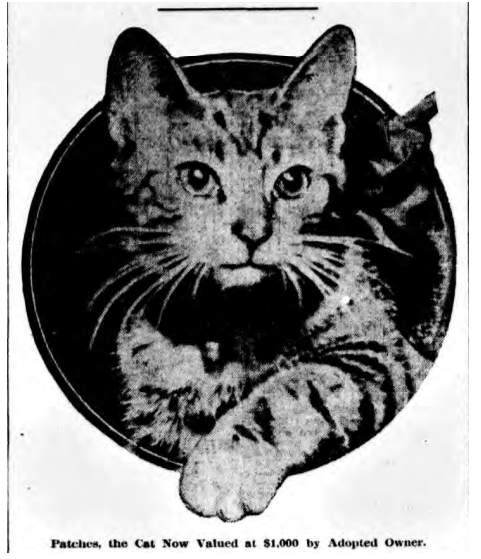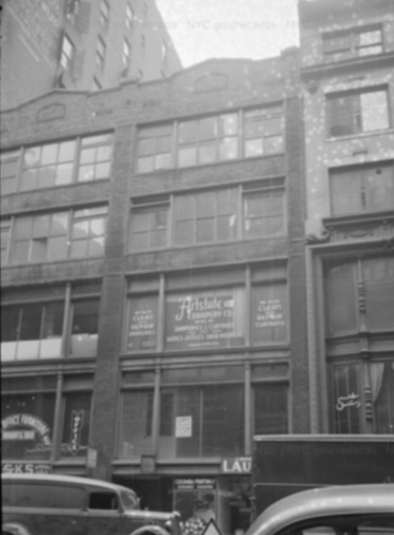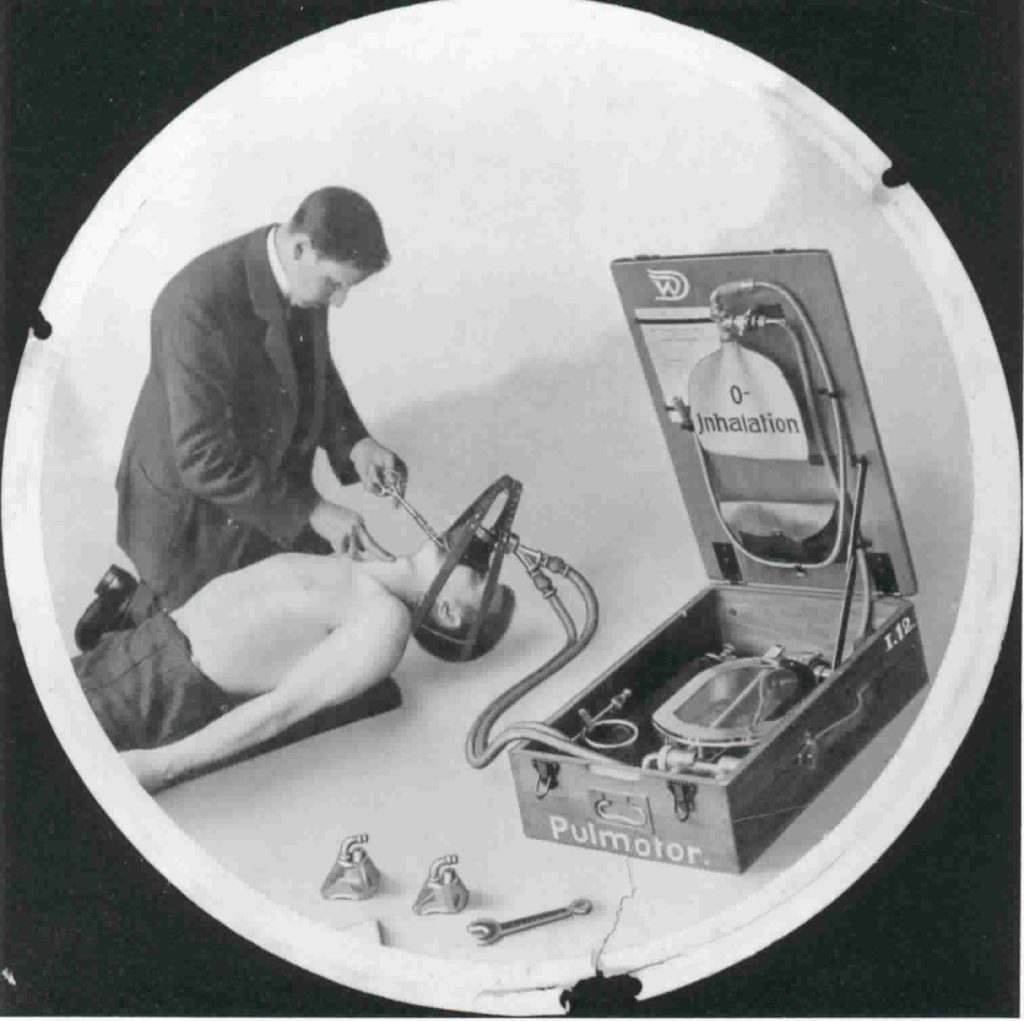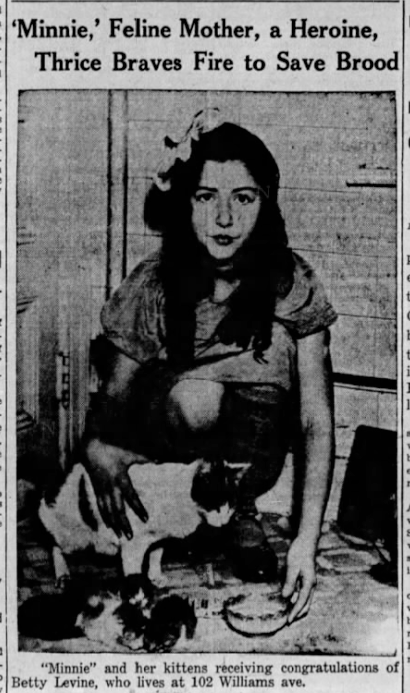
My latest posts celebrated a few helpful horses and heroic dogs of Old New York that came to the rescue during the holiday season. Now, it’s time to celebrate some holiday-time hero cats who saved the lives of their humans and kittens in emergency situations.
Here are just a few stories of hero cats from Brooklyn and New York newspapers published from 1904 to 1932, in chronological order.
Christmas Eve 1904: The Cat Who Saved Her Human Family
This first hero cat tale is not about a cat that lived in New York City, but because she lived just across the Hudson River in Guttenberg, New Jersey, the New York Press published the heroic tale on Christmas Day.
According to the story, the unnamed cat was “a plain, home-loving, child-petted American mouser with no pretentions to pedigree and with an absolute detestation of blue ribbons.” She lived with Joseph Gerlich, his wife, and their three young children on Hudson Avenue.
On December 23, Joseph left a coal fire burning to heat their bedrooms. Toward daylight on Christmas Eve, he was awakened by a frantic scratching and piteous mewing at the door to his room. He rolled out of bed and discovered the room was filled with gas fumes.
Joseph broke open a window and stuck his head out to take in some fresh air. As soon as his brain cleared, he awakened his wife and dragged her to the window. Then he brought their oldest child to the source of fresh air.
When he got to the rooms of his younger children–Henry, age 4, and Annie, age 2, the children were unconscious. When the fresh air did not revive his children, he ran to the nearest physician’s office, carrying them in his arms. It took Joseph and the doctor two hours of “heroic work” to revive the two little ones.
You’ll be happy to know that the cat, who joined the family as a kitten, survived and reportedly lived happily ever after with the Gerlich family. As Joseph told the New York Press, the cat was worth more than all the money in the world, and had earned all the milk and bread she could eat from then until the rest of her natural life.
1912: Patches, The Stray Cat Who Saved 5 Lives

Patches, a dark grey tabby cat, was not always welcome in the mixed-use building at 16 West 31st Street. In fact, one of his worst enemies was Daniel De Lena, an advertising agent who did not tolerate the cat’s persistency in annoying him on a daily basis.
But a few weeks before Christmas 1912, the cat’s annoying habits saved five lives.
According to the New York Press, one morning Patches jumped on Daniel’s shoulder and then kept running to and from a rear window while excitedly meowing. At first, Daniel kicked at Patches and tried to shoo the cat away.
But finally, the cat’s persistency paid off. When Daniel got up to look out the first-floor window, he saw that the rear of the building was in flames. He ran through the four-story brick building, waking several people who lived and worked there.
Several people, including Joseph Henderson (an art publisher on the top floor), Anton C. Berthon (a ribbon manufacturer on the third floor), and J. Camacho (a student visiting someone on the second floor), had to be rescued by firefighters (Camacho was “dragged out half suffocated.”) Dressmakers Caroline Meyers and Mrs. A. M. Wetsel were carried out unconscious from the third floor.
The fire, which had started in some defective insulation and rapidly spread to the front of the building, caused about $1,000 in damage. Daniel adopted Patches the cat, and told reporters the cat was now valued at $1,000.
1919: Life-Saving Hero Cats of Brooklyn

Two weeks before the first day of Hanukkah 1919, the Evening World reported on a Brooklyn cat that saved nine lives. Not the proverbial feline nine lives, but the nine lives of Jacob Braunstein, his wife, Yetta, and their seven children.
Similar to the Gerlich’s cat, the Braunstein’s cat began crying and sounding the alarm when gas began filling up their home at 433 Flushing Avenue in the South Williamsburg neighborhood. The cries woke up 13-year-old David, who opened several windows with assistance from Policemen Miller and McDermott of the Clymer Street station.
Neighbors who also heard the boy’s and cat’s cries for help came to the rescue of the other family members, who were all unconscious.
The police officers administered first aid to Saul (12), Lillian (14), Samuel (17), Bessie (9), Joseph (5), and Esther (6 months old). An ambulance surgeon from St. Catherine’s Hospital was able to revive everyone with Pulmotors.
About 10 days after this incident, another of many hero cats involving gas emergencies came to the rescue of Mr. and Mrs. Schults at 240 Stockholm Street in the Bushwick section of Brooklyn.
Reportedly, Mr. Schults had left a light burning in the dining room before he went to bed, and a gust of wind coming through an open window blew out the gas flame. The “illuminating gas” escaped from the jet and began filling the house.

Bertha, described as a large black cat, was sleeping on a sofa and began choking on the gas fumes. She struggled into the bedroom, jumped on the bed, and began moaning pitifully. The couple tried to get up, but they were too weak from the escaping gas.
Mrs. Schults was able to call out for a neighbor in the adjoining apartment for assistance. Dr. Cartright of the Wyckoff Heights Hospital arrived and revived Mr. and Mrs. Schults (probably with a Pulmotor).
1923: Starving Woman Saved by Cat
One week before Christmas 1923, the meows of a cat saved the life of Mrs. Ellen Richards, a 74-year-old woman who was found unconscious in the rear of a hallway on Bushwick Avenue near Siegel Street.
According to the Brooklyn Standard Union, Policeman Ready of the Stagg Street station heard the cat’s cries and found the woman cuddled up behind a door leading to the cellar. She had wrapped herself in newspapers in lieu of a blanket.
Policeman Ready summoned Surgeon Mulle from St. Catharine’s Hospital, who rushed Mrs. Richards to the hospital. There, she was revived and given warm food. She said she was homeless and had no friends or family.
As was the case back then, Mrs. Richards was charged with vagrancy and ordered to appear before Magistrate Dale in the Bridge Plaza Police Court. She was remanded to jail pending further investigation. I could not find any more information about Mrs. Richards or the hero cat that found her.

1932: Minnie, a Cat Who Saved 36 Lives
Minnie was a tough New York City mouser who worked in the cellar of a three-story building at 102 Williams Avenue in the northern section of New Lots, Brooklyn. A dairy business owned by Samuel Jaspe was on the ground floor.
On Christmas Eve 1932, the “nondescript gray and white” cat gave birth to five gray and white Maltese kittens. As the Brooklyn Times Union noted, “Minnie’s husband, a traveling man” was not around to witness the birth.
Not long after the kittens were born, at 11:30 a.m., some trash and boxes in the cellar caught fire. Samuel called for the fire department.
When firemen arrived a few minutes later, they saw Minnie emerging from the “smoke-belching cellar door.” She had a tiny newborn kitten in her mouth, which she carefully laid under the stoop at 100 Williams Avenue.

Minnie made two more trips into the smoky cellar, each time saving another nine lives. Sadly, a fourth and fifth trip was too much for the hero mother cat: Seeing that the smoke was getting the better of her, and with flames now reaching up to the store above, the fireman had to stop her from saving her last two kittens.
Minnie reportedly fought to enter the inferno, but when she was finally convinced that her two kittens were lost, she hurriedly returned to the three babies she had saved.
After the fire was extinguished, photographers arrived to take pictures of the heroic mother. But while they were adjusting their cameras, she disappeared. A search was started.
A few minutes later, a small boy appeared with Minnie. In her mouth was one of the last two kittens, sooty and soaking wet but still alive.
Damage from the fire was slight and confined to the basement. Samuel Jaspe found a new home for Minnie and her surviving four kittens with the Levine family, who lived in an apartment above the dairy business.
It was a Happy New Year for all.



Thank you for more heartwarming stories of holiday animal heroes! And this time my favorites: cats! Happy Holidays and thanks for all the wonderful reading you’ve given fans like me this year!
These are great stories Peggy and so appreciated during these trying times. Thanks for lifting our holiday spirits! Merry Christmas and a happy healthy 2022!
So glad my stories lift people’s spirits! Have a Merry Christmas and a safe, healthy New Year!